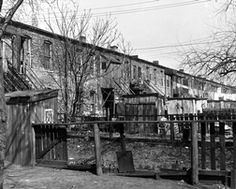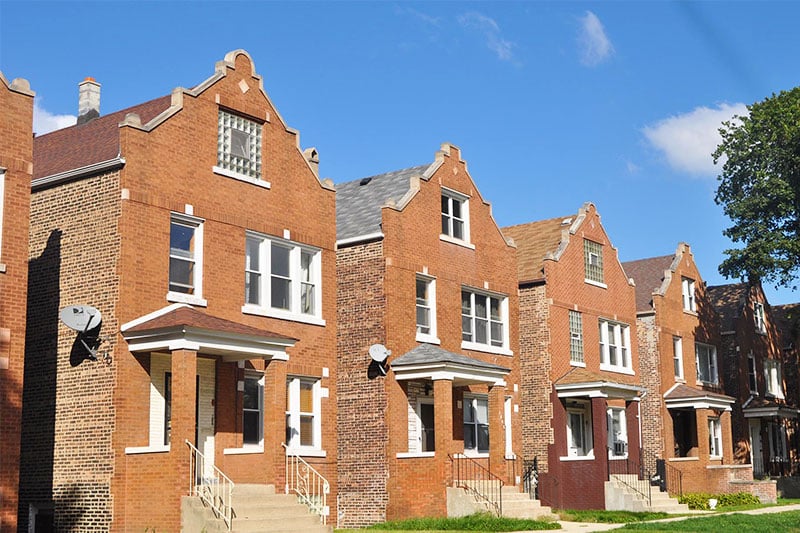McKinley Park in Chicago
McKinley Park, located on the southwest side of Chicago, is a vibrant community with a rich history and diverse culture. This working-class neighborhood has evolved over the years, shaped by waves of immigrants and industrial development. In this comprehensive guide, we will delve into the history, politics, culture, and demographics of McKinley Park, exploring its transformation from a humble settlement to a thriving community. So, let’s embark on a journey through time and discover the fascinating story of McKinley Park.
History
The history of McKinley Park dates back to the early 19th century when Irish workers, employed in the construction of the Illinois & Michigan Canal, settled in the area around 1836. These Irish immigrants claimed small plots of land and established a community. However, as the canal project progressed, some farmers purchased and drained the land, displacing the Irish squatters. In 1840, the town of Brighton was platted and later incorporated in 1851, becoming one of the first attempts at town building in the area.
The completion of the Illinois & Michigan Canal in 1848 and the arrival of the Chicago & Alton Railroad in 1857 spurred further development in McKinley Park. The transportation advantages brought by the railroad and waterways attracted industries to the area. During the Civil War, factories and brickyards flourished along the Chicago River and the railroad. Notably, the Union Rolling Mill, founded in the early 1860s, produced a significant quantity of rails per day and later became part of U.S. Steel.
Despite challenges such as swampy lands and poor drainage, McKinley Park continued to grow. Many steelworkers settled in the area, particularly around Archer and Ashland Avenues and 35th Street, known as Mt. Pleasant. The community faced issues like standing water, mosquitoes, and flooding, leading to the nickname “Ducktown.” However, these challenges did not deter the annexation of McKinley Park to Chicago in 1863.
The devastating Chicago fire of 1871 displaced numerous industries, which then relocated to McKinley Park. The area saw the establishment of factories, mainly in the iron and steel sector, along with a rise in meatpacking operations to the south. This period marked the formation of a solid working-class community that still thrives today. However, industrial growth also brought environmental challenges, with the pollution of the south fork of the Chicago River, known as “Bubbly Creek,” due to the dumping of wastes by packinghouses.

Despite the environmental concerns, the industrial jobs created opportunities and led to a period of unprecedented growth and prosperity. The workforce consisted of Irish, Germans, Swedes, English, and native-born Americans. Even after the arrival of Polish and other Eastern European immigrants in the early 20th century, the neighborhood retained its predominantly English-speaking character. Transportation in McKinley Park improved in the late 19th century with the extension of car lines on Archer Avenue and 35th Street, enhancing connectivity.
As the 20th century progressed, the landscape of McKinley Park underwent further transformations. Steel mills and brickyards closed down, making way for new activities. The Central Manufacturing District, established in 1905, covered a significant portion of the area and remained operational until the late 1990s. Notable developments included the opening of a new bottling plant by Pepsi-Cola and the presence of the Wrigley Company’s chewing gum manufacturing facility. The expansion of the Chicago Sun-Times’ publishing and distribution plant also contributed to the changing face of the community.
One significant milestone in McKinley Park’s history was the creation of a park in the early 20th century. In honor of President William McKinley, the park was named after him following his assassination. With a sprawling 69-acre space, the park became a centerpiece of the neighborhood, featuring amenities like a swimming pool and an ice-skating rink. This park became an emblem of the community and played a pivotal role in shaping its identity.
Over the years, McKinley Park experienced fluctuations in population. However, during the 1990s, the population saw a growth from 13,297 to 15,962, with an increasing number of Mexican residents contributing to the ethnic mix. Today, McKinley Park showcases a blend of well-maintained two and four-flat buildings, alongside new infill housing projects. The presence of two stops on the CTA Orange Line rapid transit system has boosted property values and spurred the development of a restaurant, shopping mall, and drugstore.

Culture
McKinley Park is a neighborhood rich in cultural diversity and community engagement. Several neighborhood newspapers, such as the Bridgeport News, the Archer Journal News, the Brighton Park/McKinley Park Life, and the McKinley Park News, serve as vital sources of local information. Delivered weekly on Wednesdays, these newspapers reach homes, businesses, and various establishments throughout the neighborhood, fostering a sense of community and keeping residents informed.
The neighborhood is also home to numerous environmental justice groups, including Neighbors for Environmental Justice and the Southwest Environmental Alliance. These organizations actively work to address environmental concerns and promote sustainability in McKinley Park and its surrounding areas. Their efforts contribute to the overall well-being and quality of life in the community.
Demographics
The demographics of McKinley Park reflect its diverse and evolving character. Over the years, the neighborhood has witnessed changes in the ethnic composition of its population. According to the latest available data, the population of McKinley Park in 2020 stood at 15,923. The racial and ethnic makeup of the community includes a mix of different backgrounds. Approximately 15.4% of the population identifies as White, 1.2% as Black, 52.8% as Hispanic, and 30.0% as Asian. Another 0.6% represents other racial categories.
The neighborhood’s population growth has also seen an increase in foreign-born residents. In 2020, around 37.9% of the population in McKinley Park was foreign-born. The presence of a diverse range of cultures and languages contributes to the vibrant tapestry of the community, fostering an inclusive and multicultural environment.
The neighborhood has a captivating story to tell. From its humble beginnings as a settlement of Irish workers to its transformation into a vibrant working-class community, the neighborhood has witnessed significant changes over time. The industrial boom, the creation of a park, and the influx of diverse immigrant groups have all shaped the unique character of McKinley Park.
Today, this community area of Chicago stands as a testament to the perseverance and resilience of its residents. With its well-kept buildings, community engagement, and cultural diversity, the neighborhood continues to thrive. As the community looks towards the future, McKinley Park will undoubtedly preserve its rich heritage while embracing new opportunities for growth and development.


